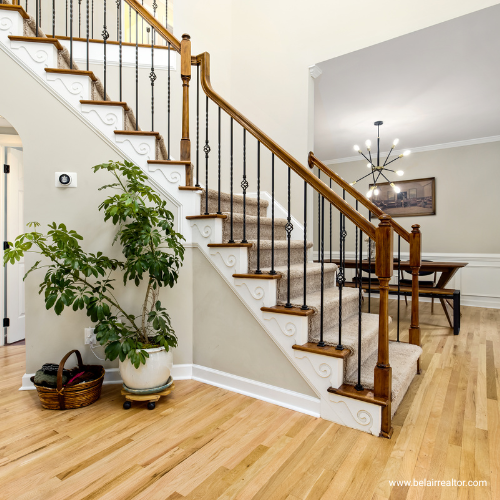Have you ever stepped into a house for sale and instantly pictured where your furniture would go, or found yourself
daydreaming about living there after scrolling through the photos? You’re not alone. Certain homes for sale
seem to capture hearts faster than others, and there’s real psychology behind it. Let’s look at the emotions, first impressions,
and subtle cues that make some houses simply “feel right.”
Heart Over Head (and That’s Okay) 
Yes, budgets and inspections matter. But most of us make the first call with our gut. We feel a spark and then our brain
catches up with reasons like “great schools” or “new roof.” That’s why a home with the right vibe can get multiple offers while
a similar one sits. Emotion leads the way.
First Impressions Are Everything
Online or in person, those first few seconds matter. Bright, inviting photos stop the scroll. A tidy front yard and a welcoming
entry set the tone before you’ve even taken off your shoes. If the first glance feels good, you’ll forgive a small bedroom or dated
light fixture. If it feels off, it’s hard to recover. Sellers: trim, tidy, and light it up. Buyers: notice how the house makes you
feel right at the start.
The Price “Frame” (Hello, Anchoring)
The list price sets an expectation in your mind, whether you realize it or not. Price a touch low and you might spark a frenzy;
price too high and buyers check out before they’ve checked it out. The same thing happens with the first home you tour; it becomes
your baseline for everything else. That’s why some places feel “wow” and others feel “meh,” even if the specs are close.
Scarcity and FOMO Are Real
When you know other buyers are circling, urgency kicks in. Suddenly this isn’t just a nice living room—it’s the living
room you don’t want to lose. That’s when people rush offers, stretch budgets, and write those “dear seller” letters. Buyers: take
a breath and lean on your must-have list. Sellers: if your home is prepped and priced right, healthy buzz helps.
Engage the Senses
Homes that feel good… well, feel good. Fresh air, soft lighting, clean surfaces, quiet rooms—these little things add up. Heavy
scents and dark corners don’t. You don’t need cookies baking or a candle in every room. Aim for light, clean, and calm. Buyers
notice—even if they can’t put a finger on why.
Staging = A Head Start for the Imagination
Staging isn’t about tricking anyone; it’s about helping people see how a space works. A cozy chair by the window says
“slow Saturday mornings.” A simple desk setup says “WFH without the kitchen table.” Neutral, uncluttered rooms make it easy
to picture your stuff, your routine, your life. That’s when “a house” becomes “our home.”
Screen vs. Doorstep
Online, the job is to earn a showing: great cover photo, clear description, honest layout. In person, the job is to confirm
the promise: light the rooms, open the blinds, keep it fresh and quiet. Sometimes a home looks amazing online and underwhelms
in real life; other times the in-person feel blows the photos away. The winners do both.
Why Some Homes Get Snapped Up
- Warm first impression: curb appeal and entry that make you smile.
- Clean, bright rooms: simple staging and lots of light.
- Realistic pricing: feels like value, sparks confidence.
- Buzz and scarcity: a sense that people want this home right now.
Put those together and buyers act quickly—not because they’re reckless, but because it feels right.
Final Thought
Falling in love with a home is part logic, part heart. Pay attention to both. If you’re selling, focus on light, cleanliness,
and that welcoming first moment. If you’re buying, notice your gut reaction—and double-check it with your budget and must-haves.
Ready to browse homes for sale with this mindset? You’ll spot the ones
that truly speak to you—and you’ll understand why.

